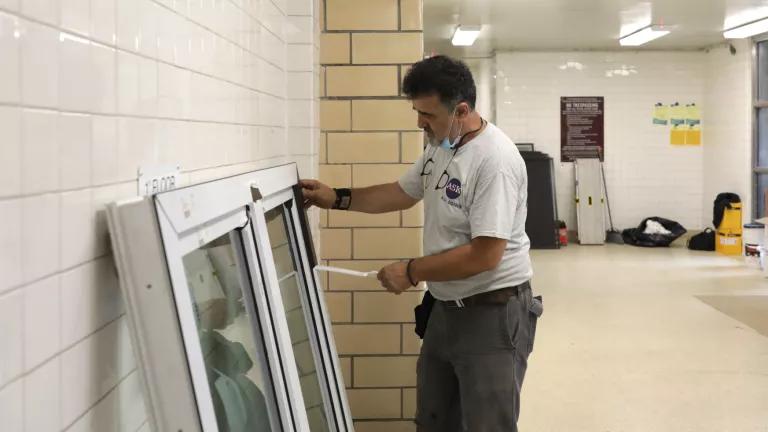President Trump, Light Bulbs Don’t Cause People to Look Orange
President Trump has been talking a lot lately about light bulbs and complaining that they make people look orange, are toxic, and cost too much. He’s sadly mistaken on all front. Let’s correct the record.
President Trump has been talking a lot lately about light bulbs and complaining that they make people look orange, are toxic, and cost too much. He’s sadly mistaken on all fronts. Let’s correct the record.
Consumers are very happy with LEDs
Talking about energy-efficient light bulbs, the president has said the “light is the worst” and “that we all take on an orange tone under the lights.” Everyday light bulbs do not cause people to look orange. The Washington Post debunked the president’s claim, showing that blaming light bulbs for his orange skin tone doesn’t hold up. The president might be confusing things and referring to the compact fluorescent lamp or CFLs. Some consumers never liked CFL’s light quality, but these bulbs have now all but been supplanted by even-more-energy-efficient LEDs in the market. In fact, the big lighting company General Electric made the business decision to stop manufacturing CFLs in 2016.
If the president is really referring to today’s LED light bulbs, his opinions conflict with the US Department of Energy’s website which says: “Quality LED light bulbs last longer, are more durable, and offer comparable or better light quality than other types of lighting.” More importantly, his views conflict with consumers who are shifting to LEDs in droves. For the standard pear-shaped light bulb, more than half of current sales are LEDs, up from only a few percent a few short years ago.
Consumers really like today’s LED light bulbs because they give off great light in any shade a consumer wants and help reduce utility bills. Well over a billion LED bulbs have been sold in the US to date. Look at the consumer reviews on a retailer’s website like homedepot.com and one will quickly see how happy buyers are with their performance and quality. Most of the LED bulbs have a rating of around 4.5 out of 5, which is extremely high for any product.
LEDs are completely safe to use
The president also said, “If it breaks, it’s considered a hazardous waste site. It’s gases inside.” Once again, the president probably was referring to the now-dying CFL technology. These old bulbs did contain very low levels of mercury inside them. But, LED bulbs do NOT contain mercury or other harmful chemicals.
The president is trying to scare people into thinking they are going to have to buy a CFL and that’s simply not true.
Incandescents and halogens are no bargain
According to the president, the bulbs “are many times more expensive.” LED bulbs typically do cost a little more than equivalent incandescent or halogen bulbs, but the additional cost has come way, way down. Now, LED’s are readily available for $2 to $3 when purchased in a 4 pack. The incandescent, including halogen, bulbs they replace typically cost around $1.50 or $2 each, hardly a big difference. Consider that LEDs last 10 to 25 times longer AND use a fraction of the electricity of incandescent bulbs and consumers are way better off switching to LEDs. Each time a consumer selects an LED, they are making a choice that will save $25 to $100 worth of electricity over the LED bulb’s useful life. Savings will vary depending on local utility rates, the bulb’s brightness, and its lifetime. Consumers will also avoid the hassle and additional cost of having to buy an incandescent or halogen every year or two, when their bulb burns out.
LED bulbs are such a good investment that they pay for themselves within the first six months of operation and then deliver bill savings for years to follow.
Let’s complete the transition to efficient lighting
Unfortunately, the president’s mixed-up understanding of the facts about modern energy saving light bulbs may be helping to push his administration's drive to roll back light bulb efficiency standards. Under a 2007 bi-partisan law signed by President Bush, the national transition to energy efficient lighting was supposed to be completed by January 1, 2020. The law, which helped set in motion the investments that led to development of today’s low-cost, high quality LEDs, requires that new light bulbs sold would be energy-efficient. Our colleagues at the Appliance Standards Awareness Project (ASAP) have estimated that implementing the law as required will: save $14 billion on annual utility bills; prevent the need to generate 25 large (500 MW) coal burning power plants worth of electricity each year; and prevent 38 million tons per year of CO2 emissions.
But this month President Trump’s Department of Energy proposed to eliminate those standards by rescinding a 2017 decision that would have applied standards to all the common shapes and sizes of bulbs used in homes and by issuing an opinion that the standards contained in the 2007 law do not apply. Those decisions are sure to draw a legal challenge from NRDC and others. It’s a shame that the president can’t seem to get his facts or his policies right when it comes to energy-savings light bulbs.



